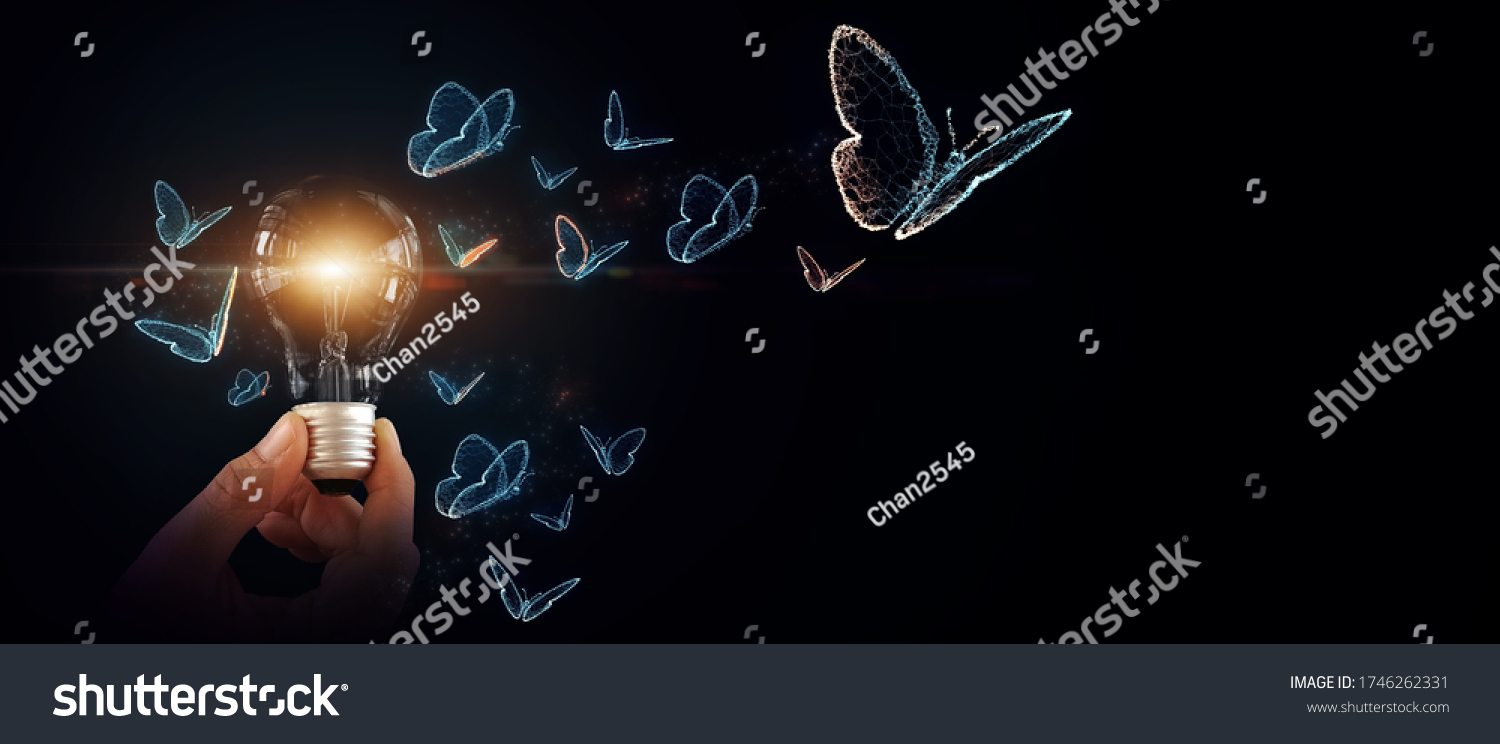In this subject so far, we have looked at the basics of effectual entrepreneurship in the topics on failure, uncertainty, starting with what you have (your available means) and deciding what you can afford to lose. Commencing with this topic, up to Topic 10, we will look at taking action and reflecting more specifically on you as an entrepreneur. This awareness will enable us to practise and develop ourselves as effectual entrepreneurs and develop our self-efficacy.
In this particular topic, we will look at how the effectual entrepreneur transforms their available means into taking action. When we talk about the entrepreneur taking action, we refer to the conversion of the available means to create a new product, venture or even the establishment of a new market that did not previously exist. This conversion of available means into something valuable requires a level of creativity that is supported by transformation strategies. These strategies, such as exaptation, deleting/supplementing and ad hoc association, foster a smoother and more creative way of developing ideas and ventures.
Welcome to Topic 6: Action – or the Transformation of Opportunities in Effectuation. In this topic you will learn about:
- Transformation of available means
- Different types of transformation
- What design thinking is
- The connection between design thinking and effectuation.
This topic relates to the following subject learning outcomes:
- Identify and apply the core principles of effectuation and how they form the basis of the effectual cycle.
- Explain how the entrepreneurial bias toward action leads to experience, which in turn increases self-efficacy.
Welcome to your pre-seminar learning tasks for this week. Please ensure you complete these prior to attending your scheduled seminar with your lecturer.
Click on each of the following headings to read more about what is required for each of your pre-seminar learning tasks.
Read the following chapter of the textbook Read, S, Sarasvathy, S, Dew, N & Wiltbank, R 2016, Effectual Entrepreneurship, Second edition, Routledge.
- Chapter 11, pp. 124-135: Transforming means into something valuable
Read and watch the following content.
For your second assessment, you should be putting together what you have done to date in your reflective journal. You should use your reflections in response to learning tasks to develop a first draft in response to the assessment instructions set out for the reflective journal in the study guide.

So, how do we create opportunities? Is there entrepreneurial magic involved?
We have seen expert entrepreneurs use their available means as a starting point. Once you know what your available means are, the next step is to convert this into something valuable. This is the key ingredient of said ‘entrepreneurial magic’, transforming your available means into a new idea or venture.
Effectuation identifies several transformation types that enable entrepreneurs to think creatively about the world around them and come up with many new ideas and opportunities that may ultimately lead to a new venture. In this topic, we will explore the ‘how’ behind the transformation of available means.
Several transformation types have been identified to help us understand how to create something valuable using what we already have access to as part of our available means. Understanding these different transformation types enables us to identify ways in which we could generate ideas and use our own available means to then take action and create opportunities.
Transformaton types
In order to understand how exactly expert entrepreneurs transform their available means, the Venturing Experiment, which you would have read about in your textbook reading as part of your pre-seminar learning tasks, was set up by Sarasvathi (2007) to observe entrepreneurs transform ideas into opportunities (Read et al 2016).
Transformation types identified include (but not limited to) are:
- Deleting/supplementing
- Ad hoc association
- Composing/decomposing
- Exaptation
- Re-weighting
- Manipulation
- Deformation
- Localisation/regionalisation/globalisation.
You can think of these transformation types as a set of decision-making strategies. The more you practise and develop these strategies, the more creative you become in applying them when transforming available means into opportunities.
Let us look at each of these in more detail, along with examples of products and services which arose from applying each transformation type.
Deleting/supplementing

This first strategy, or transformation type, that we will discuss requires us to look at a product or service and consider the features or components we may want to add or remove in order to create a more streamlined offering or increase the attractiveness of the original idea.
An example of this transformation type is the Dollar Shave Club. In 2012, the Dollar Shave Club cut out the middleman by selling directly to the consumer rather than going through a retail store. With a strong focus on online marketing and reliance on humour in its messaging, the company set itself apart from the traditional physical retail of men’s shaving products (Osterwalder et al 2020).
In many ways, technology, and specifically online selling, has enabled this form of transformation to thrive. Whilst this was already very prominent, the global pandemic has only accelerated consumer demand for the ability to purchase online. One of the most salient examples would be the delivery services that grocery stores and supermarkets have added. In other words, these stores supplemented the selling of groceries with a delivery service direct to the household (Shveda 2020).
In the UK only about 17% of fruit and vegetables sold in supermarkets are grown locally (Shveda 2020). COVID-19 exposed the vulnerability of the global supply chain, and supermarkets had to face supply shortages. In response to this supermarket vulnerability, local suppliers with fewer steps between the producer and the consumer are another example of deleting/supplementing. In that context, local suppliers deleted steps in the supply chain compared with supermarkets and supplemented their original offering with delivery services.
In short, this transformation type involves any form of an addition to or subtraction from an existing product or service. You apply this transformation type by looking at your current product or service and thinking about which elements or features you could add or remove in order to increase the attractiveness of the original offering. Alternatively, you may include supplementing your original offering by adding something completely new in order to create a surprising combination from an unrelated domain.
Ad hoc association

The ad hoc association transformation type forces out-of-the-box solutions by putting together unrelated ideas.
Entrepreneurs can draw on their prior experience and associate a current venture or idea with previous (unrelated) problems or opportunities, creating a hybrid. This transformation strategy creates new combinations from two different products or services (or elements thereof) that appear quite disjointed to start with (Read et al 2016).
Bergqvist (entrepreneur and founder of Icehotel) is an excellent example of an entrepreneurial implementation of this transformation type.
Bergqvist offered rafting, canoeing, fishing, and paddling along with rafting tours along the Swedish Tourne River to approximately 6,000 guests in the summer months; summer business was thriving. However, the Icehotel was quiet and lacked guests during the dark winter months. To increase winter business, he thought about different ways to attract tourists during the winter and researched other destinations with a similar climate. His tourist manager did not believe this was possible, encouraging Bergquist to close during winter. Thankfully, Bergqvist did not listen. Instead, he embarked on an inspirational trip to Japan, where he met with artists who worked with a resource that is in abundance in Sweden, ice.
Bergqvist invited two Japanese ice sculptors back to Sweden with him to lead an art workshop for Swedish artists. This led to ice sculptures popping up around the landscape. A year later, the opening of Artic Hall, a 250-meter igloo that housed artwork created from ice and snow. When all the existing cabins were booked out one night, a group of visitors asked for accommodation. As a stopgap measure, they stayed in the art gallery made from ice with some warm sleeping bags. These guests were so enthusiastic about their experience that the idea of creating a hotel made from ice was born (Icehotel n.d.).
The seemingly unlikely hybrid of the ice sculptures and an accommodation offering made use of Bergqvist’s past experience and available means; leading to this ad hoc association idea of the Icehotel.
Composing/decomposing

The composing or decomposing transformation type involves rethinking the components of a product or service that are already there. In essence, a product or service is dissected, and its components are reassembled in a new configuration. Imagine that you are pulling apart a Lego construction and reconstructing it to create something new.
An example of this transformation type is Terracycle. The company originally started by setting up a large worm farm to process organic waste by turning it into Worm Poop to help plants grow. This addressed the problem of green waste and turned it into plant food. In order to sell the Worm Poop, Terracycle packaged it in paper bags and invited gardening stores and nurseries to stock it (Read et al 2016).
The resellers replied that the product looked good, however, the smell coming through the paper bags was not attractive to potential customers. This response triggered the composing/decomposing transformation strategy for Terracycle. Plastic bottles were used for packaging their product instead. However, to align the approach of creating their Worm Poop product from waste, Terracycle decided to develop its packaging from recycled plastic waste.
This approach to upcycling existing products using recycled alternatives led to a whole suite of Terracycle applications, including homewares, stationery items, toys and gardening products (Urbanwins n.d.). None of these individual products were new inventions. However, rethinking how these products were made ( using recycled waste) was an entirely new way of thinking.
Exaptation

The exaptation transformation type refers to either using a product or service meant for a completely different purpose or applying it in a way that was not originally intended.
The term ‘exaptation’ is derived from biology, where it has been used to explain how feathers initially regulated temperature and were later evolved (or exapted) for a completely new purpose, namely, flight (Society for Effectuation n.d.).
A key question we must ask ourselves when looking for other uses for something (in other words, exapting something) is “what else could we do with this?” And... ‘What else?’ 'What else?' We need to ask this question repeatedly to come up with creative ideas.
Did you know Listerine, the product we now know as a mouthwash, originally began its life as a floor cleaner and an antiseptic product? Listerine was not very successful commercially. It was then rebranded for a completely new purpose (exapted); to resolve bad breath (Heilpern 2016).
Bubble wrap was invented in 1957 by Fielding and Chavannes (Burke 2006). Its original purpose was textured wallpaper. Unfortunately, this first product idea was not successful. The inventors then rethought their product and tried to launch it as greenhouse insulation. While the product is translucent and is reasonably effective at holding in heat, this second application did not take off either. Years later, bubble wrap was relaunched and marketed to IBM as being able to protect fragile products during transportation, which is when it finally took off (Burke 2006).
Re-weighting

This transformation type involves increasing or decreasing the focus of certain features and attributes of a product or service. In terms of innovation, re-weighting leads to changing the emphasis of certain features over others in order to create a new differentiated offering (read et al 2016).
An example of this is the increased emphasis BMW has placed on the appeal to the driver in launching its new product designs (compared to Volvo for instance, who chose to emphasise the safety features of their cars). By shifting this focus, they have differentiated their offering towards the creation what BMW coins “the ultimate driving machine” (Society for Effectuation n.d.).
Manipulation

Manipulation sees entrepreneurs creatively inventing, mirroring and twisting to turn an existing idea or product inside out (Read et al 2016).
An interesting example of inversion was described by the Economist (2005), namely, the market for violent video games. Whilst there has been much criticism of the psychological effects of violent video games on minors, rethinking the application of these games has led to a new market treating post-traumatic stress disorders in war veterans (Economist 2005).
Deformation

Like the musical term, this transformation type sees entrepreneurs deforming an original idea or concept. Referring to the musical term which describes experimental concepts of melody deformation in jazz, this transformation strategy experiments with original ideas in order to tailor them to new contexts (Dew et al 2011).
An entrepreneurial example of this is Starbucks. The founder initially launched the Starbucks concept as a formal Italian coffee bar; however, this proved unpopular in the United States. As a result, he gradually deformed the original idea to suit the American market by offering a more casual approach, different coffee sizes and ultimately flavoured coffee options (Soni, 2020).
Localisation/regionalisation/globalisation

This last transformation type involves narrowing or enlarging the scope of the market. Imagine transforming an iconic French product, for example, into a global product. Alternatively, a global product may be tailored to be more authentic or tangible, offering suitable within a local market.
The basic idea in this transformation is that we are defining something to suit either a more local, regional or global market (Dew et al 2011).
Transforming
Can you find more examples of these different transformation strategies? Do some research and post to the discussion forum. See further instructions in Topic 6: Forum Activity 1, where you will share your findings with the class.
You can also navigate to the forum by clicking on ‘ENT101 Subject Forum' in the navigation bar for this subject.
The importance of transformation
So, why are these transformation types important? Read et al (2016) show that entrepreneurs, who use these different types of transformation, are actively leveraging their available means in order to produce more opportunities, compared to those who look for an existing opportunity that needs to be invented from nothing.
Each of the different transformation types can be used and applied to any opportunity you may have in mind. Can you think of an opportunity and imagine how you can apply the different transformation types in order to create ideas suited to different audiences?
Overall, knowledge of these transformation types enables us to demystify the processes that expert entrepreneurs apply in order to generate ideas. Practising the application of these transformations builds creativity, and, through practice, we learn how to transform our own available means.
Design thinking
Design thinking has become prominent in relation to business innovation. This thinking style takes a human-centred approach to the innovation of products and services, with a significant component being the prototyping and testing of new creative ideas. In terms of feasibility, design thinking aims to look at solutions that make sense for people and are technically possible within the foreseeable future (IDEO 2022). There are many similarities between design thinking and effectuation.
The following video provides a quick introduction to what design thinking is. While you watch this video, note any similar ideas that illustrate the similarities between design thinking and effectuation.
Similar to the identification of available means in effectuation, design thinking relies on identifying available resources and considering limitations and possibilities (Varadarajan 2020).
Design thinking challenges us to consider past setbacks and use what we have learnt from these in order to create new opportunities (IDEO 2022). This is very similar to leveraging contingencies from an effectuation perspective.
In terms of dealing with uncertainty, design thinking assumes a mindset of accepting uncertainty and entering the process of creating without knowing the outcome (Varadarajan 2020). We have already learnt that effectual logic is based on accepting uncertainty and transforming our available means in order to take action without predetermining the outcome (Read et al 2016).
The focus on prototyping from a design thinking perspective (IDEO 2022) is very similar to the learning we do as part of the effectual cycle (Society for Effectuation n.d.).
Design thinking and effectuation
Read the following article, which explores the connection between design thinking and effectuation in depth.
- Klenner, N.F, Gemser, G & Karpen, I.O 2022, ‘Entrepreneurial ways of designing and designerly ways of entrepreneuring: Exploring the relationship between design thinking and effectuation theory,’ Journal of Product Innovation Management, 39 (1):66-94.
Once you have read the article, reflect on how you think design thinking may be useful in transforming your available means into opportunities and taking action. Note down your ideas in your reflective journal and be prepared to discuss these during the seminar.
You can access the reflective journal by clicking on ‘Journal’ in the navigation bar for this subject.
Wrap-up
In this topic we have discussed that there is no special entrepreneurial magic involved in the transformation of the means available into ideas and opportunities. Instead, effectuation identifies several transformation types which enable entrepreneurs to think creatively about the world around us and come up with many new possibilities.
We have discussed the different transformation strategies from deleting and supplementing right through to localisation, regionalisation and globalisation; in order to gain insight into how expert entrepreneurs come up with new ideas. These transformation types can be thought of as a set of decision-making strategies that we can practise and develop in order to think more creatively.
We have also explored design thinking. There are many similarities between design thinking and effectuation; such as using the resources or means available to you as a starting point, making the most of setbacks or contingencies and the inherent prototyping and learning process that both espouse.
Key takeouts
- Several transformation types have been identified which enable entrepreneurs to think creatively about the world around us and come up with many new ideas and opportunities.
- There are many similarities between design thinking and effectuation.
- Like the identification of available means in effectuation, design thinking relies on the identification of resources available to the entrepreneur.
- Design thinking and effectuation both embrace uncertainty and take small steps that are reviewed and learned from in order to develop solutions using trial and error.
- Entrepreneurs who can use these different types of transformation are actively leveraging their available means in order to produce more opportunities.
Welcome to your seminar for this topic. Your lecturer will start a video stream during your scheduled class time. You can access your scheduled class by clicking on ‘Live Sessions’ found within your navigation bar and locating the relevant day/class or by clicking on the following link and then clicking ‘Join’ to enter the class.
Click here to access your seminar.
The learning tasks are listed below. These will be completed during the seminar with your lecturer. Should you be unable to attend, you will be able to watch the recording, which can be found via the following link or by navigating to the class through ‘Live Sessions’ via your navigation bar.
Click here to access the recording. (Please note: this will be available shortly after the live session has ended.)

In-seminar learning tasks
The in-seminar learning tasks identified below will be completed during the scheduled seminar. Your lecturer will guide you through these tasks. Click on each of the following headings to read more about the requirements for each of your in-seminar learning tasks.
Your lecturer will facilitate a class discussion based on the similarities and differences between design thinking and effectuation. Refer to the notes you have made in your reflective journal as part of your pre-seminar learning tasks and be prepared to share your ideas with the class.
During the seminar, you will be split up into groups and allocated a brief article as the basis for you to develop creative ideas based on the transformation strategies discussed earlier. This is an opportunity for you to put some of these strategies into practice and train yourself to think like an expert entrepreneur.
Welcome to your post-seminar learning tasks for this week. Please ensure you complete these after attending your scheduled seminar with your lecturer. Your lecturer will advise you if any of these are to be completed during your consultation session. Click on each of the following headings to read more about the requirements for each of your post-seminar learning tasks.
Based on the draft you are developing for your reflective journal (assessment 2), prepare any specific questions to discuss with your lecturer as part of the consultation session.
Each week you will have a consultation session, which will be facilitated by your lecturer. You can join in and work with your peers on activities relating to this subject. These session times and activities will be communicated to you by your lecturer each week. Your lecturer will start a video stream during your scheduled class time. You can access your scheduled class by clicking on ‘Live Sessions’ found within your navigation bar and locating the relevant day/class or by clicking on the following link and then clicking 'Join' to enter the class.
Click here to access your consultation session.
Should you be unable to attend, you will be able to watch the recording, which can be found via the following link or by navigating to the class through ‘Live Sessions’ via your navigation bar.
Click here to access the recording. (Please note: this will be available shortly after the live session has ended.)

These are optional readings to deepen your understanding of the topic material:
- Boyle, B 2020, 10 Activities to generate better ideas, IDEO https://www.ideou.com/blogs/inspiration/10-activities-to-generate-better-ideas?_pos=3&_sid=8f20c1afc&_ss=r
- Varadarajan, A, 2020, ‘Uncovering the link between effectuation and design thinking in early stage startups,’ https://aaltodoc.aalto.fi/bitstream/handle/123456789/42688/master_Varadarajan_Adithya_2020.pdf?sequence=1&isAllowed=y
References
- Dew, N, Read, S, Sarasvathy, S.D. & Wiltbank, R 2011, ‘On the entrepreneurial genesis of new markets: effectual transformations versus causal search and selection,’ Journal of Evolutionary Economics, 21(2): 231-253.
- The Economist 2005, ‘Odd bedfellows, striking results,’ Technology Quarterly, in The Economist, December 10–16, pp. 7–8.
- Burke, M 2006, ‘Wrap Star,’ Forbes, https://www.forbes.com/global/2006/0508/026.html?sh=3307470557fc
- Heilpern, W 2016, ‘11 famous products that were originally intended for a completely different purpose,’ Business Insider, https://www.businessinsider.com/successful-products-that-were-originally-intended-for-a-completely-different-purpose-2016-3
- IDEO 2018, What is design thinking?, streaming video, YouTube, https://www.youtube.com/watch?v=ldYzbV0NDp8
- IDEO, 2022, Design thinking, IDEO, https://www.ideou.com/pages/design-thinking
- Klenner, N.F, Gemser, G & Karpen, I.O 2022, ‘Entrepreneurial ways of designing and designerly ways of entrepreneuring: Exploring the relationship between design thinking and effectuation theory,’ Journal of Product Innovation Management, 39(1): 66-94.
- Osterwalder, A, Pigneur, Y, Smith, A & Etiemble, F, 2020, The invincible company: how to constantly reinvent your organisation with inspiration from the world's best business models (Vol. 4). John Wiley & Sons.
- Read, S. & Dolmans, S 2014, ‘A review on effectuation,’ in Fayolle, A (ed.), Handbook of research on entrepreneurship, Edward Elgar Publishing Ltd, pp. 238-261.
- Read, S, Sarasvathy, S, Dew, N & Wiltbank, R 2016, Effectual Entrepreneurship, 2nd ed., Routledge.
- Dew, N & Sarasvathy, S.D 2007, ‘Innovations, stakeholders & entrepreneurship,’ Journal of Business Ethics, 74(3): 267-283.
- Shveda, K 2020, How coronavirus is changing grocery shopping, BBC, https://www.bbc.com/future/bespoke/follow-the-food/how-covid-19-is-changing-food-shopping.html
- Society for Effectual Action, n.d, https://www.effectuation.org/
- Soni, P 2020, ‘Entrepreneurial lessons from Howard Schultz and Starbucks: how to tide over recession with reinvigoration,’ Entrepreneur.com, https://www.entrepreneur.com/en-in/growth-strategies/entrepreneurial-lessons-from-howard-schultz-and-starbucks/351856
- Urbanwins n.d., Eliminate the Idea of Waste – Close the Loop – Terracycle business model, Urbanwins, https://www.urbanwins.eu/terracycle/
